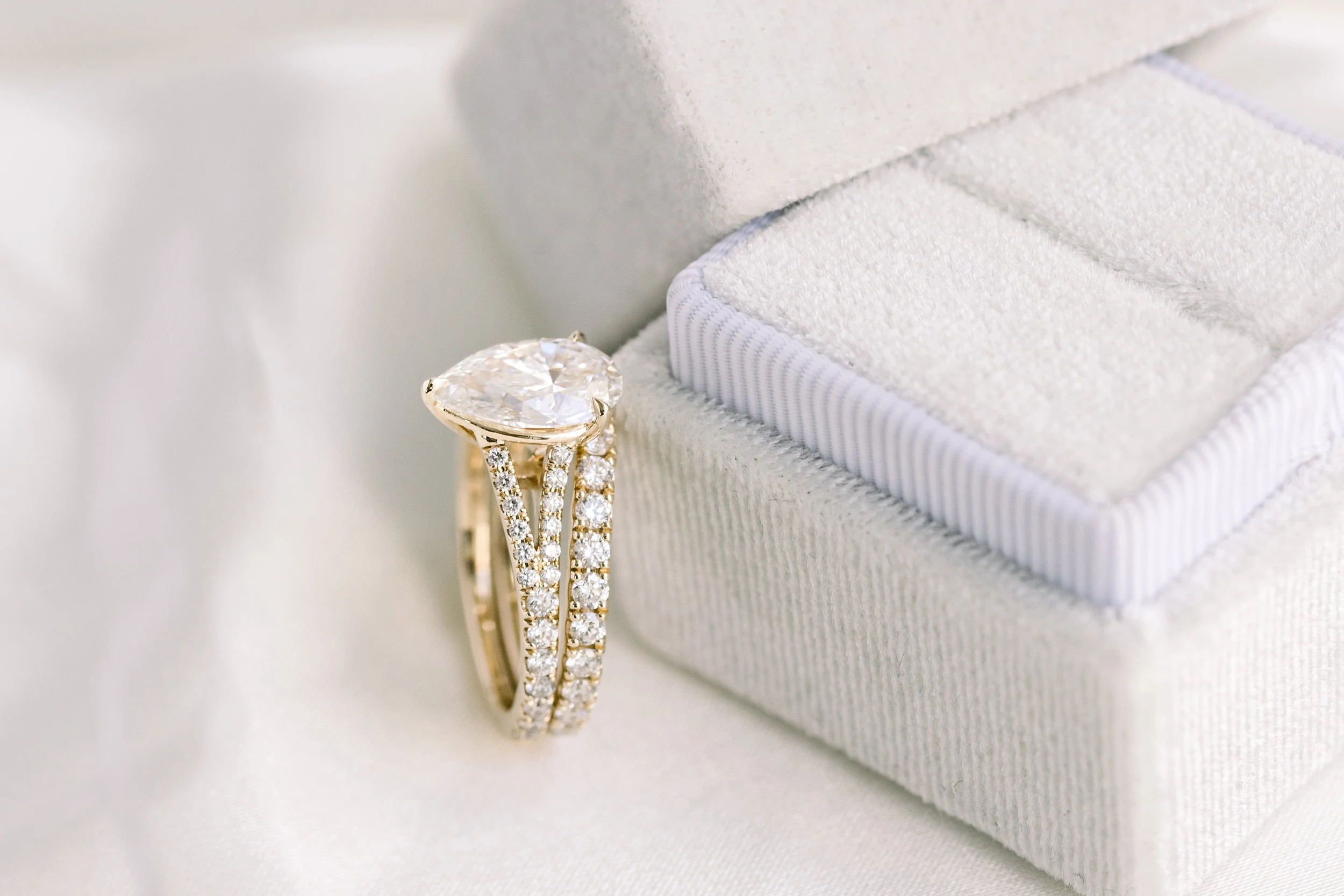What Are Diamonds?
Formation and Types of Diamonds
Diamonds are the product of a fascinating journey through the Earth’s crust, formed under immense pressure and heat over millions of years. These stunning gems are made entirely of carbon atoms arranged in a crystal structure, giving them their renowned hardness and brilliance. There are various types of diamonds, including natural diamonds, which are mined from the Earth, and lab-grown diamonds, created through advanced technological processes.
Characteristics of Diamonds
Diamonds are celebrated for their exceptional hardness (ranking a perfect 10 on the Mohs scale), brilliant sparkle, and variety of cuts and colors. They come in various shapes, from classic round cuts to modern princess cuts, and each has its unique appeal. The sparkle of a diamond, often referred to as “fire,” comes from how it interacts with light, reflecting and refracting it beautifully.
What Is White Sapphire?
Formation of White Sapphire
White sapphires, on the other hand, are corundum, a mineral made up of aluminum oxide. Unlike diamonds, they form through natural geological processes but under different conditions. Sapphires can be found in various colors, but when they’re colorless, they are classified as white sapphire vs diamond.
Key Characteristics of White Sapphire
While white sapphires may not possess the same level of brilliance as diamonds, they still offer a lovely shimmer and a classic appearance. They are durable, ranking 9 on the Mohs scale, making them suitable for everyday wear. Though they may lack some of the sparkle associated with diamonds, they have their own understated beauty.
Visual Differences Between White Sapphire and Diamonds
Brilliance and Sparkle
One of the most noticeable differences between diamonds and white sapphires is their brilliance. Diamonds are renowned for their exceptional fire, meaning they reflect light in a way that creates a stunning display of colors. White sapphires, while beautiful, tend to have a softer, more subdued sparkle. If you’re after that iconic diamond sparkle, a diamond will typically take the lead.
Color and Clarity Comparisons
In terms of clarity, diamonds are graded on a scale from flawless to included, while white sapphires can show inclusions as well. However, sapphires can be more affordable and often exhibit a clearer, more consistent color than lower-quality diamonds. This can make white sapphires a great option for those seeking clarity without the high cost of a diamond.
Durability and Hardness
Mohs Scale of Hardness
When it comes to durability, both gemstones hold up well, but there are differences worth noting. Diamonds, ranking at a 10, are the hardest natural material on Earth. White sapphires, at 9, are still very hard but are slightly more prone to scratches than diamonds. If you lead an active lifestyle or work with your hands a lot, this is something to consider.
Everyday Wear and Maintenance
Both stones are suitable for everyday wear, but diamonds require less maintenance due to their hardness. White sapphires, while durable, may need to be checked more frequently for scratches or wear. A gentle cleaning routine—soaking in warm, soapy water and using a soft brush—will keep either stone looking its best.
Cost Comparison: White Sapphire vs. Diamond
Price Range of Diamonds
Diamonds can be quite the investment, with prices varying widely based on factors like carat weight, cut, color, and clarity. A good-quality diamond can easily run into thousands of dollars. For many, this price point can be a significant barrier.
Affordability of White Sapphires
White sapphires, in contrast, are much more budget-friendly. They can cost a fraction of what a comparable diamond would, allowing you to achieve that classic look without stretching your budget. This affordability makes them an attractive option for those looking to maximize their style without compromising on quality.
Ethical Considerations
Sourcing of Diamonds
The diamond industry has long been scrutinized for ethical concerns, particularly regarding conflict lab created diamonds, which are mined in war zones and sold to finance armed conflict. While there are now measures in place to ensure ethical sourcing, it’s still crucial for consumers to be informed about where their diamonds come from.
Ethics of White Sapphire
White sapphires, being natural stones, also have ethical considerations, but they tend to have a lower environmental impact than diamond mining. Many consumers feel more at ease purchasing sapphires, knowing they are less likely to be associated with conflict or unethical practices.
Which Should You Choose?
Lifestyle Factors
Your lifestyle is an essential factor when deciding between white sapphires and diamonds. If you lead an active life, the durability of a diamond may serve you better. However, if you want something beautiful for occasional wear, a white sapphire might be the perfect choice.
Personal Preference
Ultimately, personal preference plays a huge role. Do you value the sparkling brilliance of a diamond, or are you drawn to the classic charm of a white sapphire? Consider what makes you feel most confident and beautiful, as that’s the stone you’ll treasure most.
Conclusion: Making Your Choice
In the end, the choice between white sapphires and diamonds boils down to your personal taste, budget, and values. Both stones have their unique qualities and charm, making them suitable for different styles and occasions. Whether you opt for the classic brilliance of a diamond or the elegant simplicity of a white sapphire, you can feel confident in your choice. After all, jewelry is more than just an accessory; it’s a reflection of your personality and style. So choose the stone that speaks to you and wear it proudly!





:max_bytes(150000):strip_icc()/Cryptocurrencyovertradingapp-3b7855f531754d128fed81555549a552.jpg)


